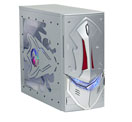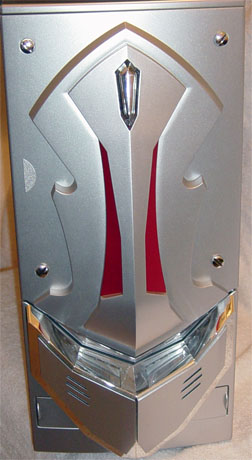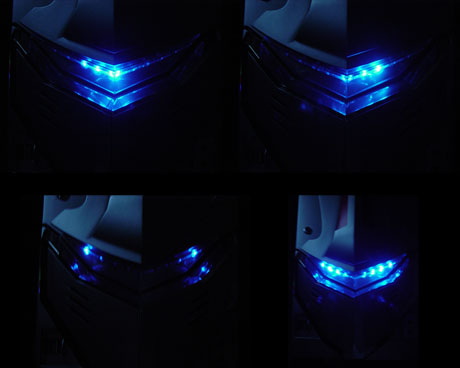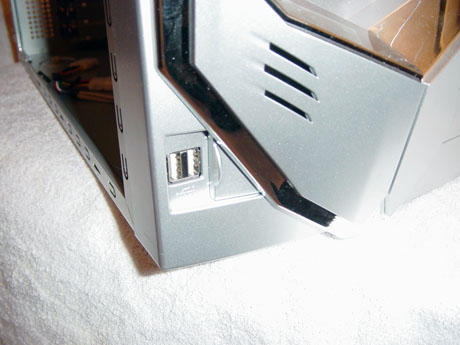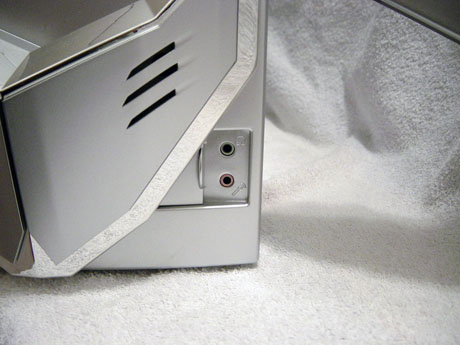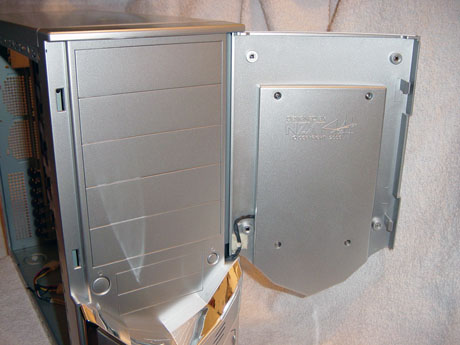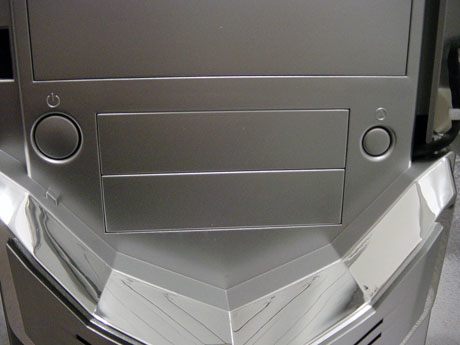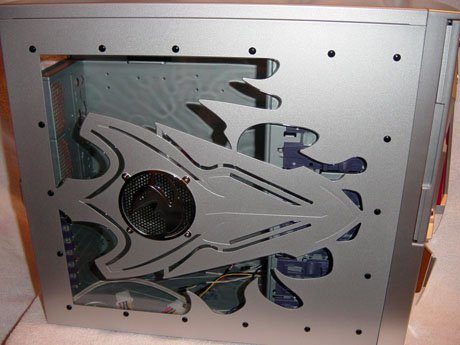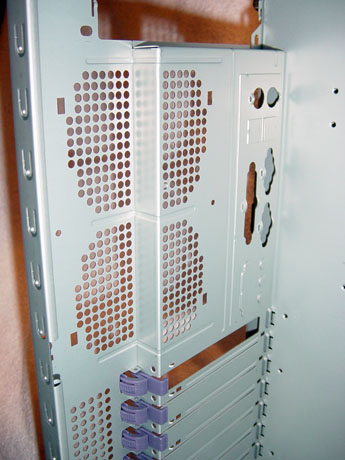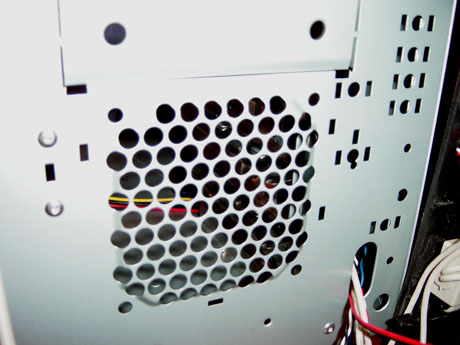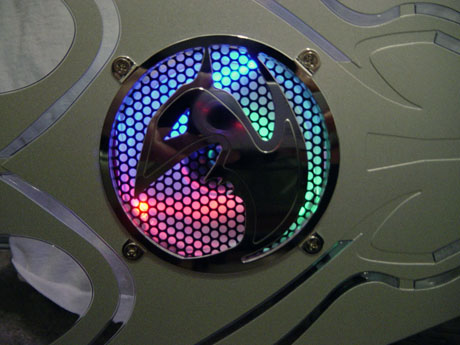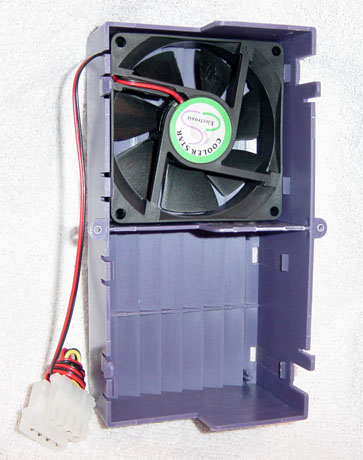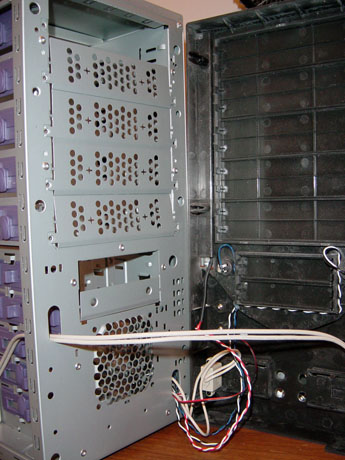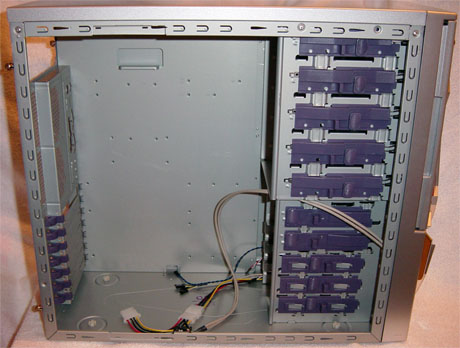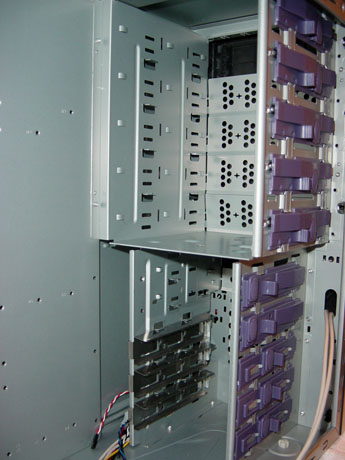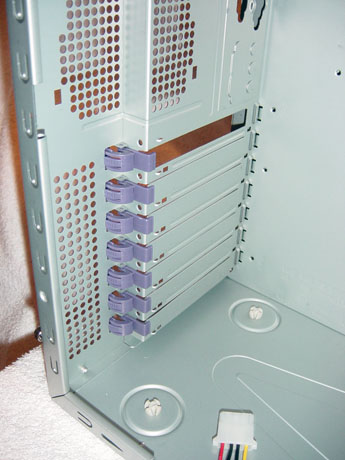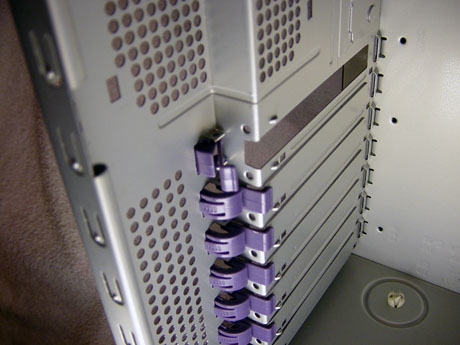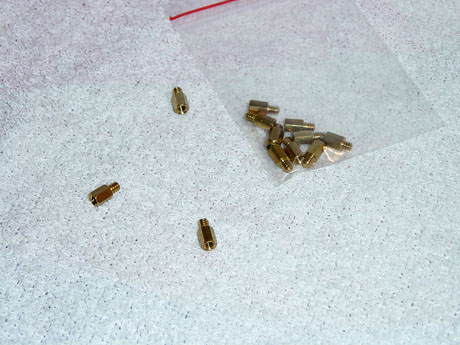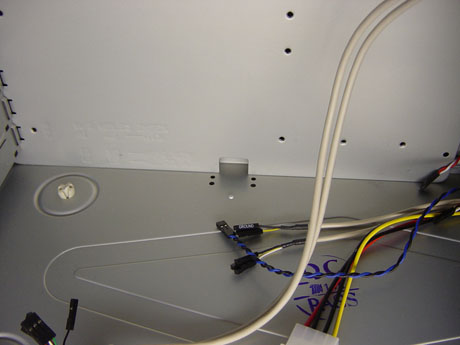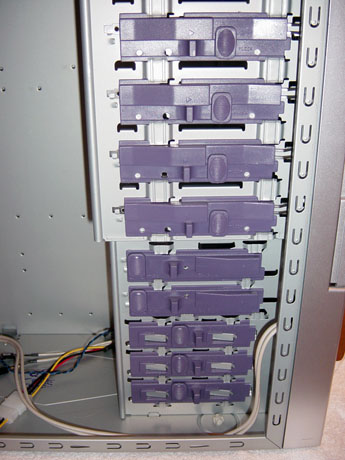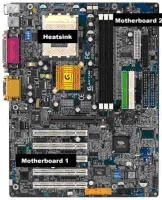
Original Link: https://www.anandtech.com/show/1287
Case modification has become a well-known hobby in the computer community during the past few years. From simple neon lighting to custom chassis designs, case modifications are becoming a standard in the industry. Many manufacturers keep this in mind when designing their cases, by either allowing add on modifications from third parties or as NZXT and many other case companies have done, including them by design.
The Guardian, which is the first and only product from NZXT so far, looks like something from Transformers with its armor-like front bezel and lighting effects. It stands out when it comes to looks, but can it perform better than the competition? We will take a look at the Guardian's features and functionality and compare it to other cases that we have reviewed.
More information on the Guardian is available at NZXT's website.
Design
The Guardian was designed with a little of everything in mind. It comes with modifications, like colored lighting and side panel window, but also includes functionality features like an almost completely screw-less/tool-less design using sliding devices for drive mountings and add-on cards.The front bezel brings back memories of the old Transformers cartoons. The face looks robotic and features a blue animated LED. The light serves as the power LED for the case, but connects directly to the power supply by a 4-pin adapter.
Fading LED (in and out) (right click to save file)
Fading LED (left to right) (right click to save file)
At the lower part of the face are two sliding pieces, which reveal two USB ports (left) as well as Audio ports (right) for use with headphones or a microphone.
Upon opening the door, the five 5-1/4" bays as well as two out of the five of the 3-1/2" drive bays come into view. Five 5-1/4" drive bays may seem too much for typical uses, since many system rigs consist of, at most, 2 optical drives with the rest being hard drives.
The Power and Reset buttons, which sit on either side of the first 3-1/2" drive bay, are well constructed and are flush to protect from accidental touches. Sitting behind the door instead of exposed when the door is closed also helps to protect from accidental shutdowns.
The Guardian comes in a variety of colors, including orange, yellow, green, blue, black, and this silver that we reviewed. The paint is of high quality and adds to the overall value of the chassis.
The left side panel has an artistic design that goes well with the case's façade. The machined design looks like a horizontal shield with a fan opening towards the back. The window is a piece of plastic mounted to the panel on the inside by the 18 black snap-on clips. The panel is easily removable by pulling the handle-like formation at the back and is held in place by thumbscrews, keeping the tool-less design going inside and out. The right side panel has vent holes whose purpose might be to allow for the exhaust of warm air.
Case Fans
Cooling systems are becoming more and more advanced in cases. Some have electronic devices with LCD displays and auto shutdown mechanisms, like the Ahanix X195 that we reviewed last week, or simple multiple fan designs, like the SilverStone TJ03. With hardware running at higher temperatures, cooling systems also need to advance.NZXT has included two 80mm fans in their Guardian. Though two fans may not seem sufficient to cool the latest components, the Guardian provides space to add two more fans to the case. An 80mm fan can be mounted at the front of the chassis, which would help keep hard drive temperatures at safe operating levels.
The fan on the side panel is multi-colored (red, blue, and green). It is placed at the center of the system to exhaust ambient air, keeping the general temperature cooler. When it comes to colors, it seems that the Guardian does not have a set color scheme. A better choice, as far as looks go, would have been a single color LED. Blue, preferably, since the "fade motion LED" at the front is blue.
The second fan is placed at the back, directly below the power supply mounting. It is encased in a plastic enclosure with vents aimed at the direction of the CPU on standard motherboards. Another fan can be mounted in the enclosure below the included fan for increased cooling.
Construction
Though aluminum is becoming the choice for many case manufacturers, steel remains a cheap, yet durable, metal for case construction. The Guardian is made of a combination of steel and strong plastic (front bezel, screw-less devices).The only sharp edges that we found while feeling around were those from the drive bay platforms. This should not be a problem, since users rarely stick their hands in those places, but they could have been dulled a bit for added safety. The rest of the case's edges have been folded over for this reason.
Though steel can be as heavy as it can be strong, the Guardian is very lightweight at about 15.6lbs. This makes the Guardian an ideal solution for those who look for mobility in their systems.
Expansion
NZXT designed the Guardian with not only style, but also with expandability in mind. There are a total of 10 drive bays, five 5-1/4" and five 3-1/2". The drive bays have a completely screw-less design using sliding clips that lock both sized drives in place.The Guardian has the 7 standard add-on card slots with the AGP slot open. An add-on face plate has been included in case the slot will not be put in use. The add-on cards are held in place by plastic clips that rotate horizontally and snap in place by pushing them from the back of the case. The devices are made of a lightweight plastic that can easily crack or break off if not properly used. We preferred the sliding clip that Thermaltake uses in its models, like the Xaser III Skull that we reviewed last month.
Again, two more 80mm fans can be added to allow better system cooling.
Motherboard Tray
Considering that the Guardian has been almost tool-less in design, we would expect it to also have a removable motherboard tray, but it does not. Like the Ahanix X195, the tray is the traditional non-removable type. The only difference between the two is that the Guardian's tray uses traditional stand-offs, which you screw in, while the X195 uses clamps, but screw-based solutions when it comes to installing the motherboard.The Guardian, however, provides more than enough holes to support Standard ATX, Micro ATX, Baby ATX, and Mini ATX boards.
At the bottom of the tray, there is an opening where wires like those from optical drives for audio can be kept out of the way. Features like this reduce clutter and increase the overall attractiveness of the product.
Installation
Installation of the necessary components took about 15 minutes. The tool-less design of the drive bays as well as the add-on cards saved a lot of time and made things easier to install. We had some difficulty getting a hard drive in the top two 3-1/2" bays, but once in, they locked in place with the sliding mechanism. The bottom three 3-1/2" bays also have aluminum platforms, which help stabilize hard drives to reduce vibrations.Installation of the motherboard took the most time to install, since the stand-offs as well as the motherboard had to be screwed in. We had some trouble getting the power supply in while the motherboard was mounted with a CPU heatsink on it. Many heatsinks are becoming larger as CPU's become more powerful and take up much more space. In order to install or replace a power supply, the heatsink must first be removed.
Benchmarking
When benchmarking the Guardian, we test the temperatures of key components, including the actual CPU temperature, the actual temperature inside the heatsink, the temperatures of the DDR, Northbridge, Southbridge, HDD, PSU, and the ambient temperature inside the case, all during normal operation. For a system to operate efficiently, the components need to stay at a specified temperature to avoid system crashes, or worse, hardware damage. A well designed case should have an air flow system that is effective in keeping the hottest running components at a constant and stable temperature for optimal performance. During our testing, the PSU and CPU heatsink fans remain on to measure temperatures during normal system operations.Gigabyte GA-7VRX |
|
We took temperature readings of the components at 10 and 30 minutes of system operation time. Compare the results to our past 2 case reviews as shown below.
| NZXT Guardian | ||||||||
| System On-Time | CPU | Heatsink | HDD | DDR | Northbridge | Southbridge | Power Supply | System Ambient |
| 10 | 53.4 | 36.7 | 30.5 | 37.1 | 40.2 | 39.9 | 29.8 | 31.9 |
| 30 | 55.3 | 37.5 | 33.2 | 38.5 | 41.8 | 41.2 | 31.9 | 35.1 |
| Ahanix Black Knight X195 | ||||||||
| System On-Time | CPU | Heatsink | HDD | DDR | Northbridge | Southbridge | Power Supply | System Ambient |
| 10 | 51.9 | 35.3 | 25.3 | 35.1 | 38.4 | 39.1 | 29.2 | 28.2 |
| 30 | 52.5 | 36.2 | 26.1 | 38.4 | 40.0 | 39.9 | 30.8 | 29.6 |
| Lian Li PC-6070 | ||||||||
| System On-Time | CPU | Heatsink | HDD | DDR | Northbridge | Southbridge | Power Supply | System Ambient |
| 10 | 52.5 | 36.8 | 26.2 | 35.3 | 39.9 | 39.7 | 29.4 | 30.2 |
| 30 | 53.8 | 37.7 | 26.9 | 39.5 | 41.6 | 40.2 | 31.6 | 33.4 |
The benchmark results show that the temperatures of all of the key components ran much higher than the Ahanix X195 and Lian Li's PC-6070. We assumed that this was due to there being only two included 80mm case fans. The hard drive temperatures were also much warmer than the other two models. Both the PC-6070 and the X195 had intake fans at the front of the case directly in front of the hard drive bays that directed air at the hard drive bays. To keep temperatures lower, more fans can be purchased and installed in the provided spaces.
Though cooling is a major factor in choosing a good case, noise levels also affect the overall quality of the product. We test the noise level of the Guardian about 12" from the sealed case with the power supply and CPU fans turned off to reproduce the noise of the case alone.
| Case | dBA |
| NZXT Guardian | 49 |
| Ahanix Black Knight X195 | 50 |
| Lian Li PC-6070 | 44 |
| SilverStone Nimiz Temjin III | 53 |
| Kingwin KT-424 Aluminum | 48 |
The Guardian performed better than the X195 and the SilverStone TJ03 in our noise tests, mainly due to fewer included case fans. Adding more fans would also add to the noise levels, but would greatly improve system cooling. Users will have to consider this trade off when looking at the NZXT Guardian.
Final Thought
The Guardian did well in our noise tests at 49dBA, but this was mainly due to the lack of case fans where they were necessary. The temperature readings were extremely high and could have been reduced by adding more fans or even replacing the ones included with larger 120mm fans to increase air flow. Though NZXT has chosen not to include extra fans, they have designed the Guardian so it can be expanded on.The Guardian, however, does feature a tool-less design when it comes to installation of drives and add-in cards, which shaved precious time off of the total installation time. Using screw-less mounting stand-offs like what Thermaltake uses would have saved about 2-3 more minutes off the total time.
NZXT has done a great job in designing a chassis in the area of expandability. They provide ample drive bays for additional storage as well as precut slots to add extra case fans. Many times we see manufacturers put more effort into making the case look good, but at the same time, perform under the average compared to other cases in its class. NZXT incorporated good looks and performance in the Guardian. If used with the right components, the Guardian can truly be a unique gaming case.

